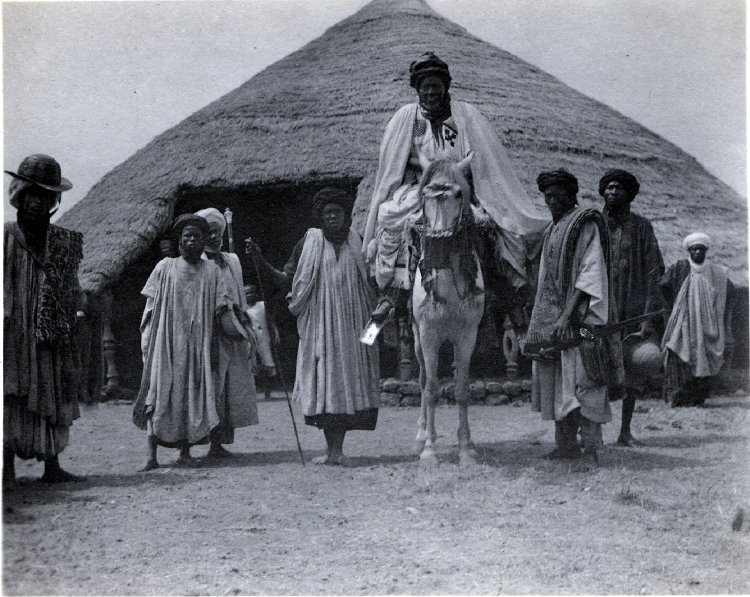
Photographic Echoes
October 9, 2023 African Arms
There is a danger collectors often fall into when looking at period photography of arms, armour and warriors of inferring a historical past on the basis of how these cultures appeared in the 19th and 20th centuries. A tendency to assume a static nature to these societies and the continued permeation of the myth of Africa being stuck in a time warp.
Certainly period photography is useful and early photos are something I use quite often for dating benchmarks. However, it is key to remember the context of the time they were taken. For many Sahel kingdoms the late 1800s and early 1900s were a time of serious decline that had started as far back as the turn of the 19th century. Decline in major trade routes, constant ravages of war from the Fulani Jihad, the travellers and colonialists often were seeing the last gasp of once great empires. Not their flourishing peak.

Take the simple example of helms and maille. Once imported from North Africa and Egypt in large numbers, by the 19th century such items were growing rare. Replacements were difficult to find, the source industries in Europe and the Arab/Berber coast no longer existed. What was already in the Sahel was antique. The result was that what Europeans saw in the 19th century was in many cases already centuries old. These were relics of the glory days, a ragtag assembly which appeared as crude as many of the war ravaged towns and cities that explorers and colonial forces came across.

The reality is far more nuanced. The cavalry of many Sahel kingdoms belonged both by strength of tradition and equipment to the North African Berber/Mamluk panoply. That a Medieval style of warfare lasted longer in the Sahel is simply a fact of the conditions and requirements of the region. Besides a few brief Ottoman inspired adventures with gunpowder weapons in Bornu in the late 16th century most of the Sahel did not see the emergence of the musket as a serious force until the 19th century.

In the 14th-18th centuries these were not isolated African tribal societies that simply happened to trade goods north across the caravan routes. Rather, these were well connected kingdoms with embassies, trading outposts and a myriad of other connections to the Islamic north. Had they not been Morocco would hardly have bothered to invade Songhai, the Mamluks to press into Sudan or Ifriqiya to maintain relations with Kanem-Bornu.
A typical western Sahel cavalryman is a far cry from what is now seen in traditional durbars and parades. Clad in maille and or quilted armour (also introduced from Egypt and North Africa), helmed and wielding a great lance with a sturdy takouba with iron pommel and guard at his side, this was a contemporary for several centuries to Islamic forces above the Sahara.
In summary, I am in no way disregarding the importance of historical photos and use them often, but they should be taken as what they are. Moments captured in time and not necessarily indicative of times before.